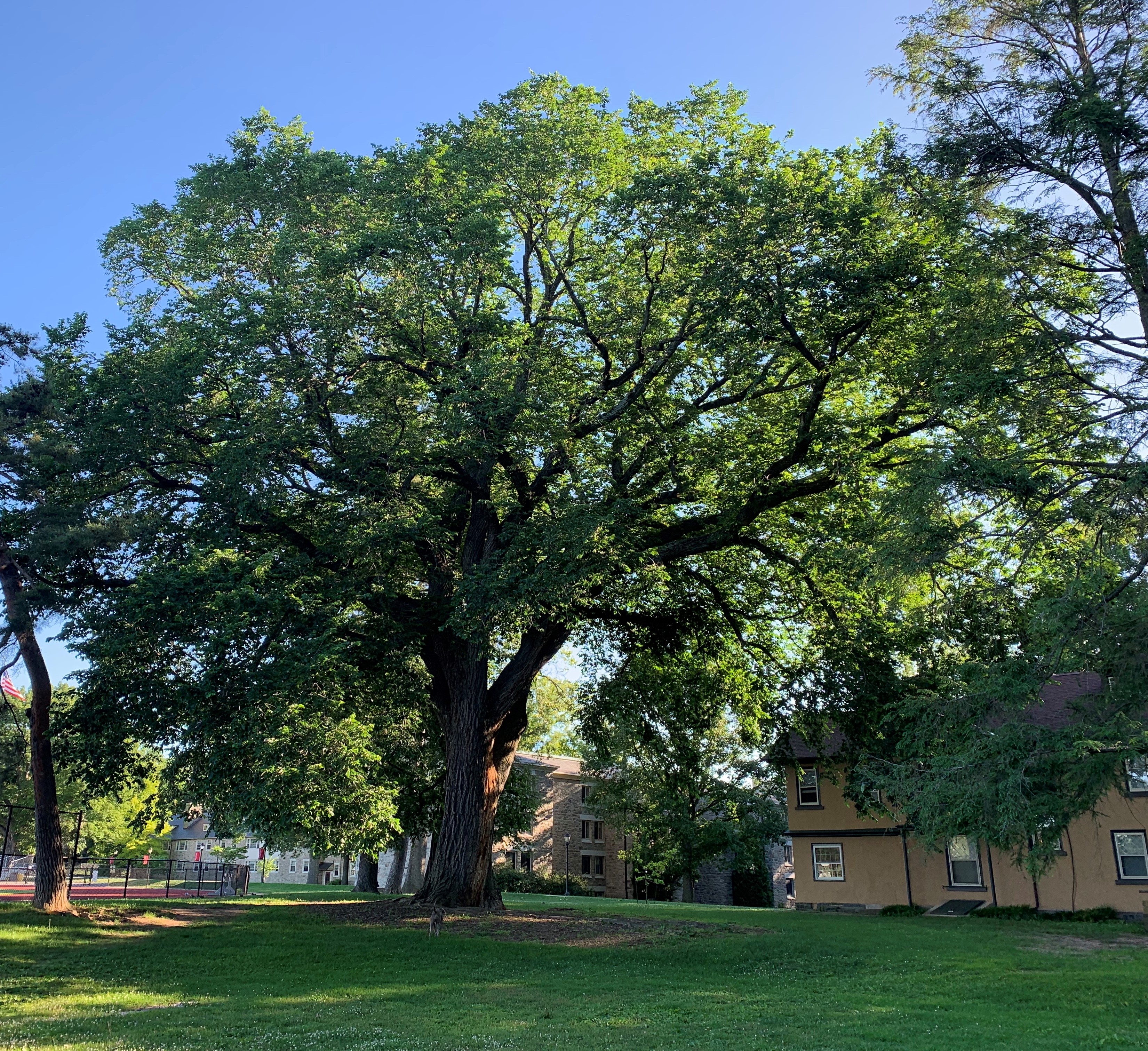
This is part one of a four-part story written by Haverford resident, Nancy Warren. A bit of historical research uncovers the role a Buck Lane house played as a Quaker boarding hostel serving WWII refugees.
PART I
By Nancy S. Warren
I discovered a 150 year old American Elm at Haverford College yesterday. It is just outside Woodside Cottage, the original schoolhouse constructed in 1833 when the college was founded. I’ve lived in this neighborhood for over 30 years and have walked the College arboretum hundreds of times. Still I had never seen that tree before. Dutch Elm disease has taken its toll on most of them. That quiet survivor must hold many a secret.
One of those long lost secrets surfaced recently. It is the story from of a long disbanded community that lived and worked in our house at 824 Buck Lane, a stone’s throw away from the college, from 1940-1942. The group was made up of political refugees who found their way to this address, then a hostel for asylum seekers. 824 Buck lane is more than a house. It’s a history of how good community works.
The lost history came to light when a friend searched the internet for directions to the house. Up sprang a letter from Christopher Isherwood to E.M. Forster dated January 11, 1942, its return address: 824 Buck Lane, Haverford, Pennsylvania. Isherwood’s writings reveal a story of heroes and heroines that is at once astounding and provocative and sadly pertinent and hopeful.
Isherwood (1904-1986) was best known for the stories he wrote in the 1930’s that were the basis for the play and movie “I am a Camera” and the musical “Cabaret.” A British novelist, playwright, screenwriter, autobiographer and diarist who studied Hinduism in India, he was a pacifist also credited with legitimizing homosexuality. The detailed and colorful writing of his diaries elaborated on the letter and allowed us to know more about what happened in this Haverford community. Importantly, the diaries reveal a refreshingly generous flow of ideas between socially-minded citizens of different nations.
In 1938 Isherwood sailed to China to research the Chinese-Japanese War (1937-1945) for his book Journey to War. It turned out to be a life-altering journey for him. Sailing home to England via America, on board The Empress of Asia , Isherwood met Rufus Jones– a Haverford College professor. Jones was a Harvard scholar and Quaker who helped found the Haverford Emergency Unit (HEU) in response to the refugee crisis in Europe. The HEU, later became part of the American Friends Service Committee, was a World War I era college program that provided non-military support for the growing refugee crisis in Europe. It is clear that Jones and his work there provided a critical link to Isherwood and the immigrants on Buck Lane. Jones, like Isherwood, had visited Gandhi at his Ashram in India. One can imagine the two conscientious objectors bonding over a common interest in Hinduism. The two disembarked to go separate ways, only to reunite in joint efforts in Haverford that would profoundly impact generations and nations.
As early as 1931, Philadelphia Quakers began focusing the Quaker Center in Berlin on support for victims of the Nazi regime. The center’s reputation had been bolstered by a post WW I program, that eventually fed 1,200,000 children a day during a time when many Germans were starving. This legacy of goodwill made it plausible that a productive meeting with the Gestapo might be possible, even if extremely unlikely. Jones and two other Quakers set sail to Germany in the frigid winter of 1938. Jones, nearly 76 years old, and his colleagues hoped to get permission from the Nazi government to continue to “promote life and human welfare and to relieve suffering,” as Quakers had in WWI.
After the difficult journey and several weeks of waiting, Jones and his colleagues were finally allowed to present a letter to Himmler’s immediate subordinate. The carefully written document reviewed the Refugee Service Committees’ apolitical and non-judgmental role in WW l and closed with a request to be allowed to sustain these efforts.
Remarkably the Gestapo granted permission for the Quakers to investigate the suffering of Jews and allowed commissioners to keep channels open for ongoing problem solving. Jones and his colleagues returned to Philadelphia by ship. They brought with them a group of Jewish refugees, some of whom ended up here, at 824 Buck Lane. The Quakers’ journey was revealed in a story in the Chestnut Hill Local in December 2011 entitled A Hill Quaker– one of ‘Three Wise Men’— saved lives in Germany; an article based on Rufus Jones’ autobiographical account, Our Day in the German Gestapo, published in July 1947, which is available on line.
Nearly all of the refugees who lived at 824 Buck Lane came from academic backgrounds and had been involved in the Democratic Socialist Party outlawed by the Nazi regime. Another person besides Jones who was key to who ended up in the house on Buck Lane was a German born Jewish academic, Hertha Kraus. Kraus had fled Germany in the 30’s.
Learn more about Herta Kraus next Wednesday, July 3, when we post PART II
Nancy S. Warren, LMSW
May 2019